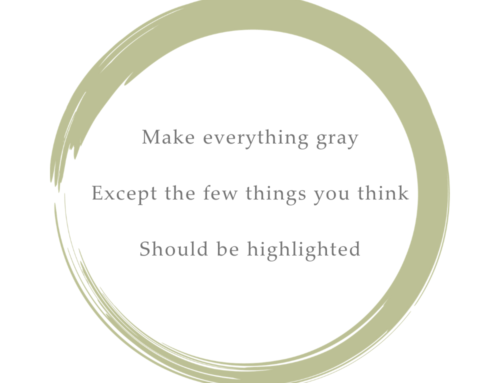This is the first in a series of three blog posts that explores why what makes Tableau’s support community so special, why you should care, and what you can do to ensure that the community thrives.
My sincere thanks go to Andy Cotgreave and Jonathan Drummey who reviewed an early draft and provided invaluable feedback. Their actions exemplify what this community is about.
72467,47
Anybody recognize that form of user ID? It’s my CompuServe ID, circa 1985.

Figure 1 — Getting help from a support forum looked like in the Australopithecus era of personal computing.
I bring this up because over the past 30 years I’ve been involved with dozens of different software communities and I’ve never seen anything that matches the quality, creativity, generosity, and, well, love, that surrounds Tableau.
And just what makes me say that, and why should you care?
Let me start with the second question first.
Why you should care
When people ask me why I like Tableau and why I recommend the product I tell them the following:
- Tableau more often than not allows “mere mortals” to discover what is important in their data, create compelling visualizations, and share these visualizations with others. By “mere mortals” I mean people not steeped in data science or graphic design.
- If, however, you are not able to figure out what to do there is a community of people at your beck and call that will help you. The community will NOT allow you to fail.
- This same community will inspire you to do better work.
Examples of the community at work and what makes it unique
Forum Posts
I was at a client earlier this year and we had our collective heads-down trying to find a visualization that would really make the underlying data sing.
The client asked about displaying pie marks on a scatterplot. Although I was almost certain that this would not yield useful insights (my polite way of saying it would look really dumb), I figured we might as well give it a try as it’s so easy to just try stuff with Tableau and see if it yields good results.
Well, it’s usually really easy to just try stuff.
In this instance I was spinning my wheels for a bit so I invoked what I call the Tableau ten-minute rule:
If, after ten minutes of working in Tableau you come to the conclusion that you are not making any progress, see if anybody else has already solved the problem.
So, I typed the following into Google:
“scatterplot with pie marks Tableau”
My first hit was this:
http://community.tableausoftware.com/message/225437

Figure 2 — A snippet for an amazingly cogent response, typical of Jonathan Drummey and so many others who share their expertise freely on the Tableau support forum.
Holy Venn Diagram, Batman! Not only was this exactly what I needed, but the post contained a wonderfully-written discourse on how Tableau works. Who takes the time to write stuff like this?
Ah, of course. Jonathan Drummey: Tableau Zen Master, Tableau forum contributor extraordinaire, and author of Drawing with Numbers, one of the “must read” data visualization and Tableau blogs.
This experience reminded me of many times that I’ve been flummoxed and I’ve sought help on the forum One “career-critical” incident occurred just as I was starting out as an independent consultant and I was in a quandary. I managed to find my post and the attendant response from Richard Leeke (another generous-with-his-time-and-expertise Zen Master) at http://community.tableausoftware.com/thread/111283.
I can still remember my relief when I tried Richard’s solution and it worked. Perfectly.
Blogs
While the forum posts make the community so helpful, it’s the blog posts that make it so rich. There are scores of people sharing their solutions and creativity and their influence on me has been profound.
I’ll cite one example.
In mid-2013 I decided to check out the “viz of the day” and see if there was anything good. I’ll confess that I can be an insufferable snob when it comes to dashboard design and my previous visits to this site had left me unimpressed.
But then I saw this http://www.tableausoftware.com/public/gallery/socialworld
F&*k! While I wasn’t paying attention a bunch of people really raised the bar on Tableau dashboard design. Now aware that I was not quite as bad-ass as I thought, I decided to find out who built this particular dashboard and discovered Kelly Martin of VizCandy.
There is so much great work here, and so many useful blog posts. This combination of quality and quantity is indicative of dozens of the Tableau bloggers that contribute to the community by creating something either useful or beautiful (or both), posting for the world to see using Tableau Public, and then explaining how they did it.
(I won’t attempt to list all of the great blogs and attendant posts, but in early 2014 Andy Cotgreave assembled a list of influential Tableau-related blog posts.)
Tableau Public
Tableau Public is a masterstroke in fostering community and visualization excellence in that it provides a free service for people to post their work. The public will in turn remark on the work (both praise and brickbats), but the really amazing thing is that a Tableau user can download packaged workbooks to see how they work.
Consider this great example from Mark Jackson.
Notice the “Download” button in the bottom right corner. With Tableau Public I can do more than just interact with the viz; I can download the workbook and see how the person built it.
I can cite dozens of times where somebody posts something cool that somebody else downloads, dissects, improves, and then re-posts, only to inspire somebody else to repeat the process.
I’ve been part of this “cycle-of-improvement” on several occasions and have downloaded hundreds of workbooks to see for myself how a fellow Tableau author built something wonderful. I’ve gotten much better at what I do because of this free exchange.
Note: I encourage you to read Andy Cotgreave’s post about why a chart should start, not end, a conversation. In this article you will find a great example of how three Tableau users found different and important truths in the same data set.
Tableau Employees
When I first started working on this essay in the spring something had gone horribly wrong with the forum: when I conducted a search through Google – or even on the forum itself – I could not find any forum posts.
This was not a good thing; my entire thesis of “if you can’t figure it out yourself, conduct a search on Google” was not going to withstand any scrutiny if none of the forum posts would show up in the search.
I won’t get into the details of what happened but it was an unintended consequence of making a change to the way the underlying support system (Jive Software) had been implemented.
I was irate over what had happened but as much as it was bothering me, it was bothering the folks tasked with making the forums work even more. These are Tableau employees that care deeply about nurturing the community and I suspect they weren’t sleeping well while this was going on. It took a while, but they fixed it, so major kudos to Tracy Fitzgerald, Dustin Smith, Ross Perez, Patrick Van Der Hyde for their efforts in remedying the problem and in nurturing the online community.
Note: There’s so much more I should write about Tableau employees but I’ve decided to mention just those employees of which I am aware whose work focuses mostly on nurturing the support community.
No Jerks
I mentioned at the beginning of this essay that I’ve been involved with a lot of software communities and they have had more than their fair share of dysfunctional, bordering on toxic, personalities.

Figure 6 –For whatever reason, there don’t seem to be any jerks (at least of which I’m aware) in the Tableau community.
I have yet to meet any jerks, either in person or online, within the Tableau community. They may exist, but so far I’ve only met people that were smart, eager to learn, eager to share, and remarkably well adjusted.
I have some ideas on why the community is as functional as it is, and it had a lot to do with the temperament of some of the earliest contributors (and one contributor in particular).
I will share my thoughts in Part Two of this series.









